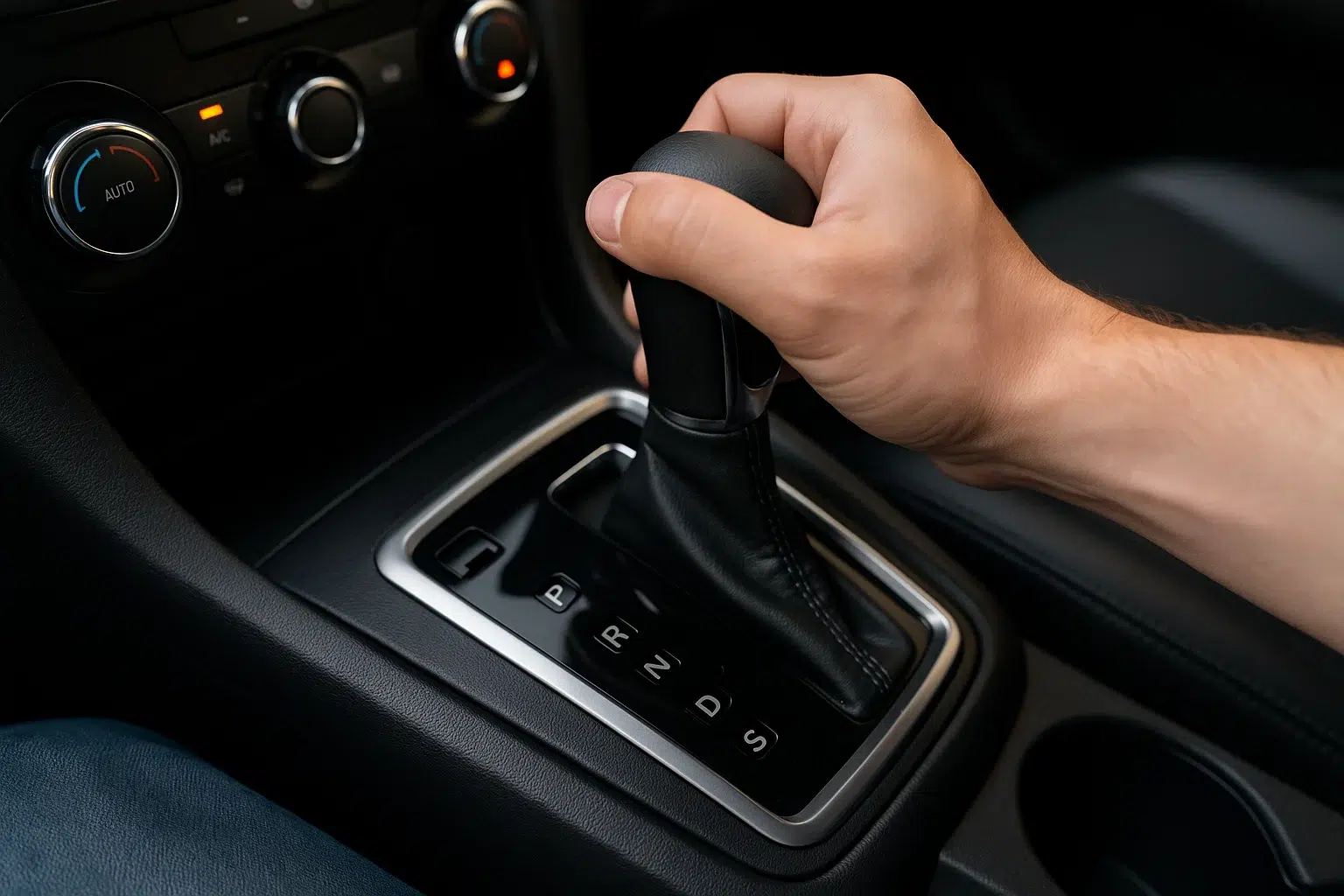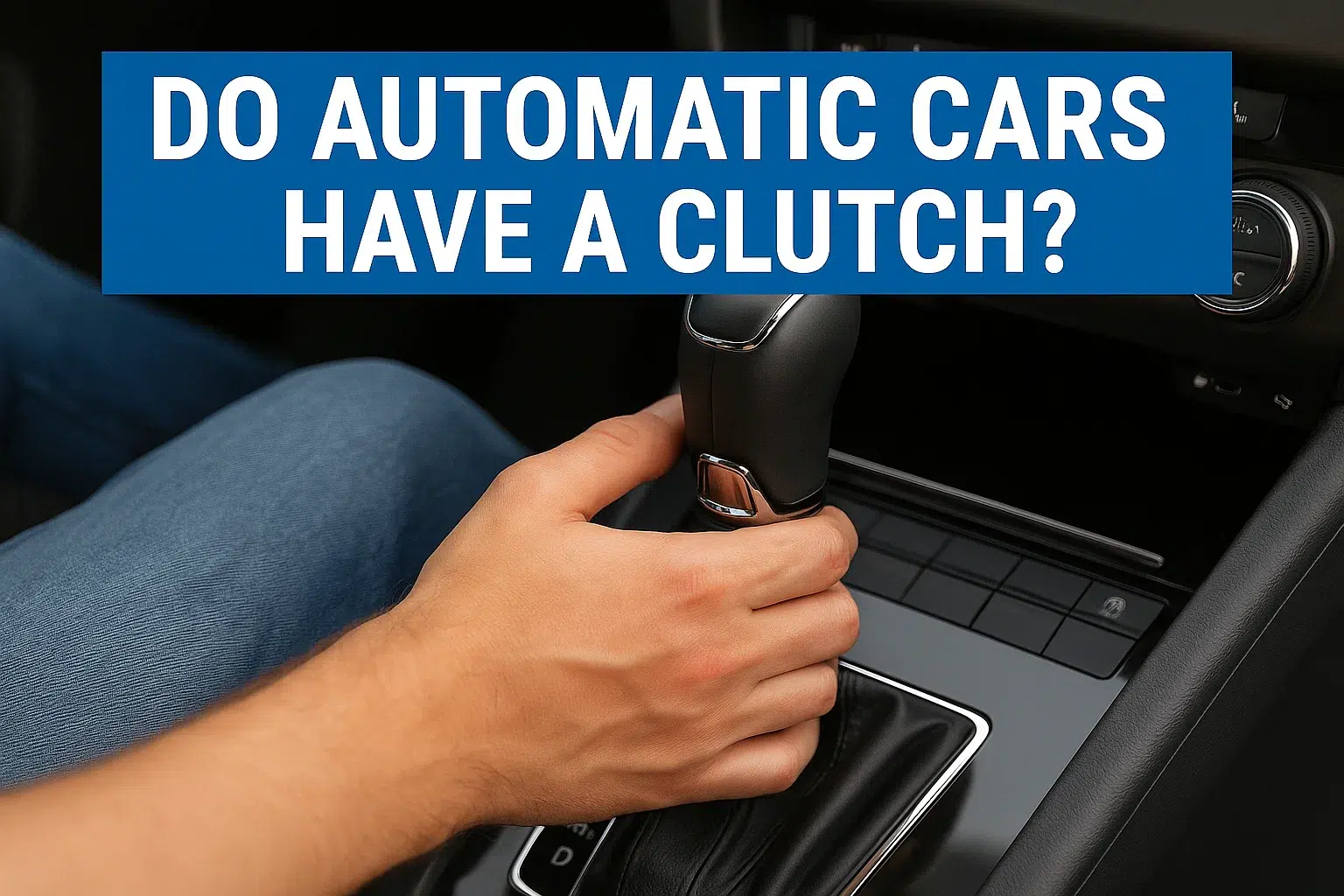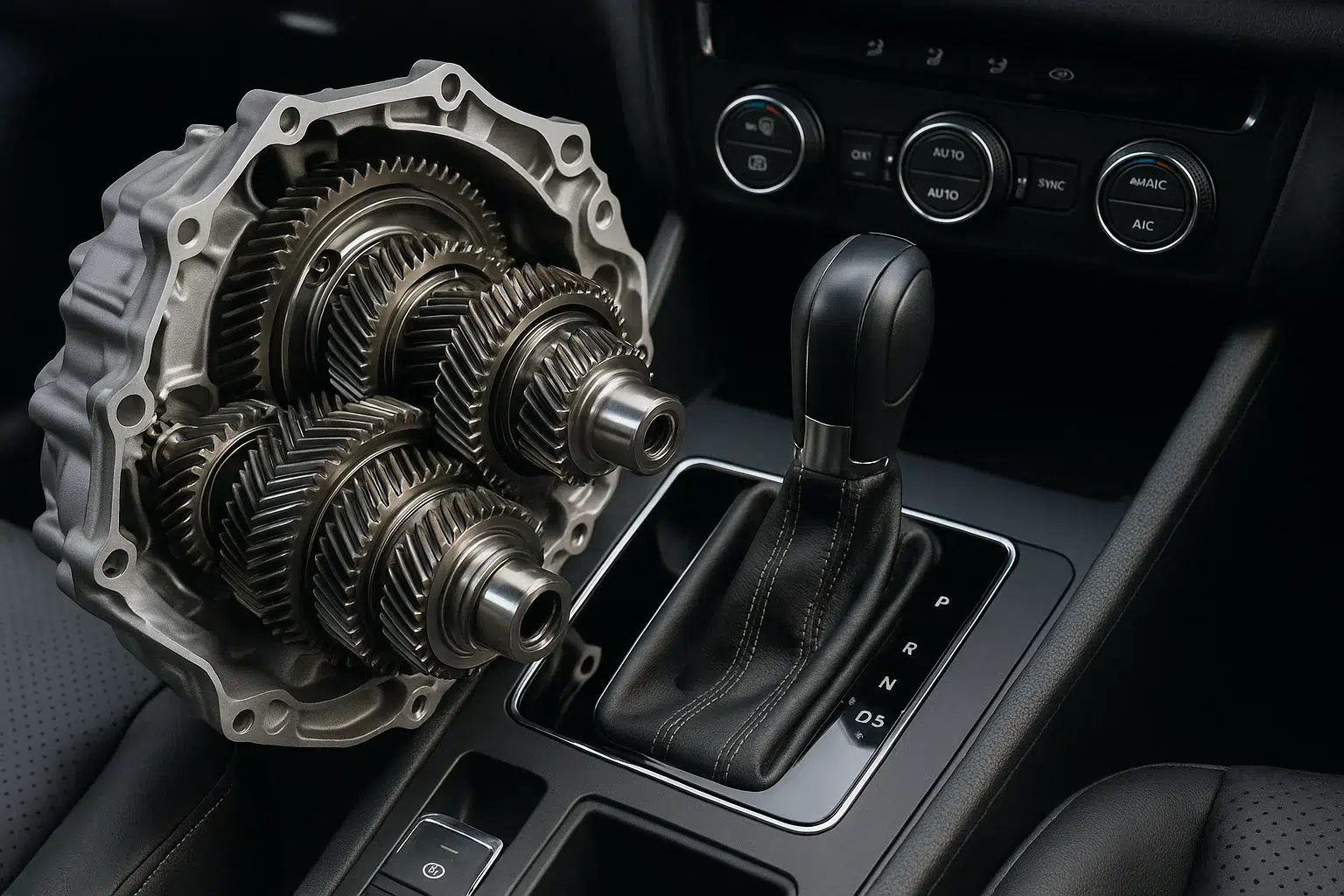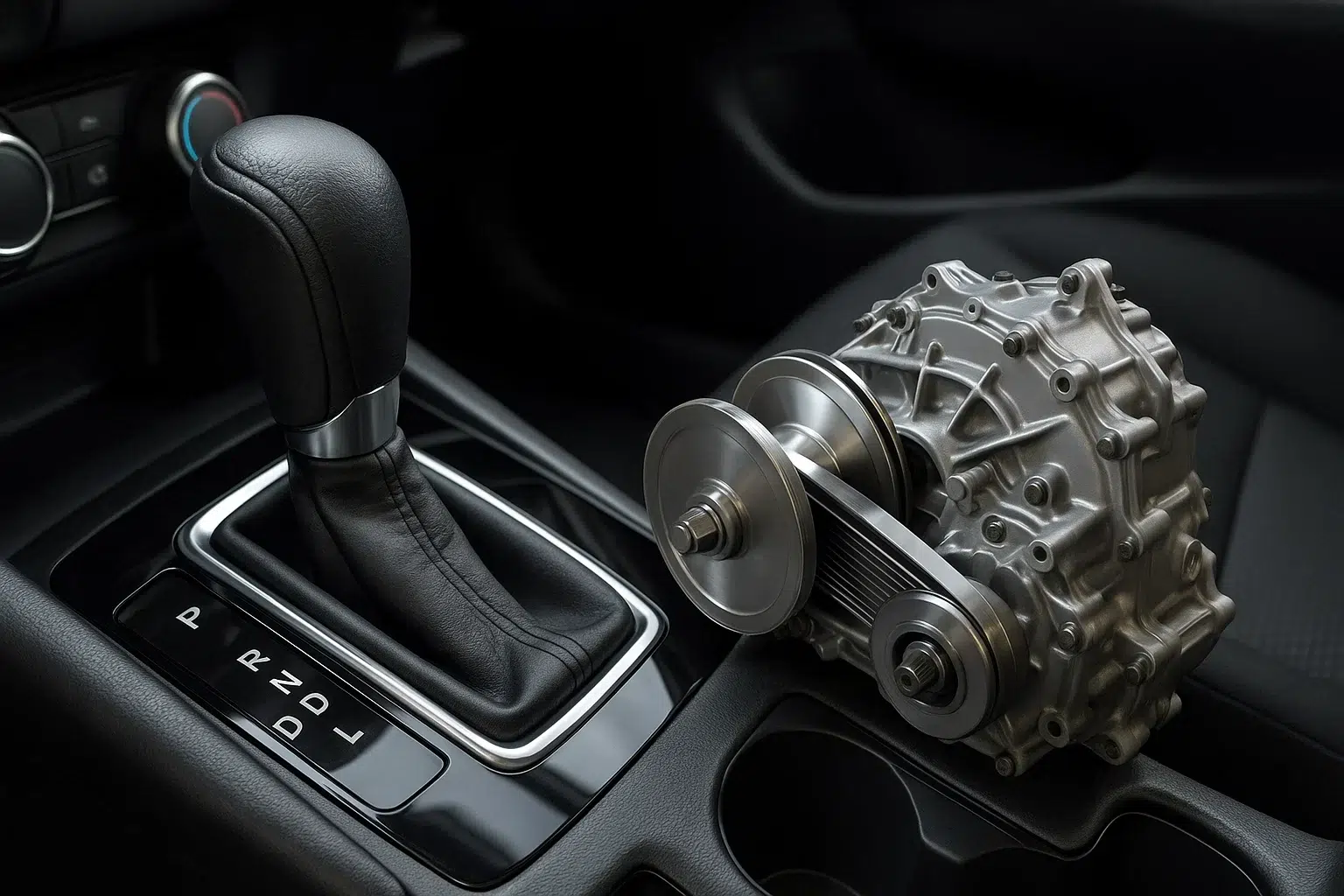Most drivers around the globe prefer automatic transmission cars. Due to increased urban traffic as well as the need for convenience, more and more manufacturers are focusing on the production of automatic cars. However, what exactly is an automatic transmission in cars, and why is it so popular? In this blog, we will discuss the automatic transmission’s functions, advantages, and its various types.
What is Automatic Transmission in Cars?
An automatic transmission in car systems is one which changes gears for the automobile, so the driver is supposed to do the acceleration of the car as well as braking without touching the clutch pedal. Automatic systems, in contrast to manual systems, have an intricate system of gears, sensors, and hydraulics which employ all systems for their best in performance.
The main objective of this technology is to provide comfort to the driver, especially in conditions of traffic congestion. It changes the gear ratio of the system proportionally to the vehicle speed, engine load as well as acceleration, providing comfort and ease to the user.
How Does Automatic Transmission Work?
Automatic transmission systems shift gears utilizing hydraulics, electronic sensors, and mechanical systems to alternate floors. The principal system components are:
- Torque Converter: replaces the clutch in manual systems. It dissolves the function of joining the engine with the turbine to send vehicle transmitting power.
- Planetary Gear Sets: These components are responsible for producing different gear ratios in a vehicle.
- Valve Body: It serves as the central controller receiving a signal from the electronic control unit, allocating hydraulic fluids responsible for different valves which control the engagement of different gears.
Using inputs from the throttle position, vehicle speed, and other factors, the system selects the best gear and automatically adjustments the gear ratio.
Benefits of Automatic Transmission in Cars
There are a number of key advantages to opting for an automatic over a manual:
1. Ease of Driving
Driving automatic cars is especially easy for beginners as they don’t have to control a gear shift or a clutch.
2. Decreased Fatigue
Driving in dense traffic becomes much easier and less exhausting since the system automatically changes gears.
3. Sharper Focus
Drivers are provided the opportunity to concentrate on more critical aspects of driving and their surroundings, benefiting overall safety.
4. Dependability
Performance with an automatic transmission is dependable and consistent, and does not vary with the driver’s skill level.
5. Enhanced Features
Vehicles equipped with Adaptive Cruise Control perform better with automatics because they need to change speed frequently over the course of a drive, especially on longer drives.
Types of Automatic Transmission
Every driver has different requirements and expectations of their vehicle, and for this reason, there are several systems of automatic transmissions. Let’s look further into this.
Torque Converter Transmission
This is the oldest form of automatic transmission and is in most of the vehicles in the market. It uses a fluid coupling to transmit the power and is reliable with smooth shifting. Its major downside is higher fuel consumption than more recent alternatives.
Continuously Variable Transmission (CVT)
This is a type of automatic transmission with no specific gears. It is preferred by most compact cars and hybrids because it ensures fuel efficiency while offering a smooth and seamless driving experience devoid of shift shock.
Dual-Clutch Transmission (DCT)
Like two manual gearboxes working together, a DCT is two shifts. One handles odd-numbered gears and the other handles the even ones. This arrangement is able to achieve very fast and efficient gear changes, which explains why it is frequently used in performance vehicles.
Automated Manual Transmission (AMT)
This is a form of manual transmission with a fully automated clutch and gear shift. It is gaining popularity in small cars because of its low price and suitability for city driving.
Tiptronic Transmission
These transmissions allow the driver to shift gears without using a clutch pedal, which is far more convenient. They are prevalent in luxury vehicles and sports cars which require a more engaging driving experience.
Manual vs Automatic Transmission: A Quick Comparison
| Feature | Manual Transmission | Automatic Transmission |
| Ease of Use | Challenging for beginners | Very easy and intuitive |
| Driving Engagement | High | Moderate |
| Fuel Efficiency (modern) | Often better | Comparable in modern systems |
| Cost | Generally lower | Higher initial cost |
| Maintenance | Less complex | Can be more expensive |
Do Automatic Cars Use a Clutch?
The question “Do automatic cars have a clutch?” often cars come up. The answer would be yes, though not in the same way as a manual transmission. Most automatic systems replace the clutch with a torque converter. However, in systems like the Dual-Clutch Transmission (DCT), two clutches are present but serve the function of the clutch pedal disengaging the system and are controlled by the car’s computer. Thus, there is no pedal for the driver to engage.
Signs of Automatic Transmission Issues
Like any mechanical system, automatic transmissions can fail. The following issues can be associated with a failing automatic transmission system:
- Gear slipping or jerky shifts
- Delayed acceleration
- Burning smell
- Leaking transmission fluid
- Warning lights on dashboard
If you experience any of these symptoms, it is crucial to have the vehicle examined right away. Also, ensure that the Car Starter is in good condition since a weak start may be misinterpreted as a transmission problem.
Maintenance Tips for Automatic Transmission in Car
Taking care of an automatic transmission in cars is critically important and helps with longevity and performance:
- Check and Change Transmission Fluid: Use fluids specified in manufacturer recommendations.
- Avoid Sudden Changing of Gears: Sudden accelerations can put wear and tear on the transmission.
- Engage the Parking Brake: Necessary for parking on slopes.
- Schedule Regular Maintenance: Regular automatic transmission checks should be done like other routine car servicing.
- Keep the transmission cool: Overheating is the leading cause of transmission failure.
Automatic Transmission in Modern Vehicles
Today’s vehicles frequently offer convenience features that complement automatic transmissions. For instance, Cruise Control in Volkswagen Cars works seamlessly to improve fuel efficiency and provide effortless driving on highways.
In addition, driver-assist features, such as the following, work best with automatic transmissions:
- Hill start assist
- Parking assist
- Automatic braking
- Lane keep assist
The Purpose of Car Axles
People often get curious, “how many axles are in a car?”. Most standard models are equipped with two axles, one on the front side and one on the rear. The transmission system, particularly automatic, connects to these axles via a driveshaft, or directly to a transaxle in case of front, rear, or all-wheel drive vehicles.
Commercial Applications of Automatic Transmissions
Automatic transmissions are not exclusive to personal cars. Many fleets are switching over to automatic vehicles because of operational convenience and commercial efficiency. For example, a pilot car driver prefers automatic transmissions during long-distance escort jobs in heavy traffic or on rural roads, due to the more effortless navigation provided by automatic systems.
Safety and Control Features
Newer model automatic cars come with a plethora of convenience and safety features. One of those is the Steering Wheel Control, which lets the driver change gears, control the volume, and even the infotainment system while keeping hands on the wheel. These controls work remarkably well with automatic transmissions.
The Rise of Electric and Hybrid Cars
Electric vehicles like big 0 terramax electric cars are using automatic systems in the form of single-speed transmissions. With the increase in hybrid and electric car models, the relevance of automatic transmissions will only increase. In hybrids, CVT and e-CVT are often used for their optimization of energy usage and efficiency.
Should You Choose an Automatic Transmission?
Here are some reasons for choosing an automatic transmission:
- If you frequently drive in areas with heavy traffic.
- If you are new to driving or find manual transmission challenging.
- If you value comfort and ease.
- If you are interested in newer vehicles with advanced safety technologies.
- If you plan to share the vehicle with several users.
If they apply to you or someone you know, opting for cars with automatic transmission could make a lot of sense.
Future of Automatic Transmission in Cars
The outlook is positive. With the advancement of smart sensors, the integration of AI, and the rise of connected vehicles, automatic transmissions will be smarter and more efficient. Some anticipated innovations include:
- Predictive shifting based on GPS data
- Complete integration with autonomous driving systems
- Performance enhancement via wireless software updates
Final Thoughts
The automatic transmission in a car has evolved greatly in sophistication, changing from a luxury feature to a basic requirement for a great number of drivers. With the various systems available now, from automatic to dual clutch systems, technology is more accessible. Embraced by modern systems, automatic transmissions are likely to be boosted by technological advances so they shall remain an essential part of driving.
Whether in heavy city traffic or on the highway, an automatic transmission in car will greatly smooth, ensure safety, and increase efficiency in travel.

I am Tushar Balchandani, founder of Car Info Expert and someone who has been working extensively in the car industry as a car expert for 15 years. My aim is to provide useful truthful and reliable information to the readers based on my real experiences and hands-on experience. From buying tips to maintenance guides, I help readers make confident car-related decisions.




